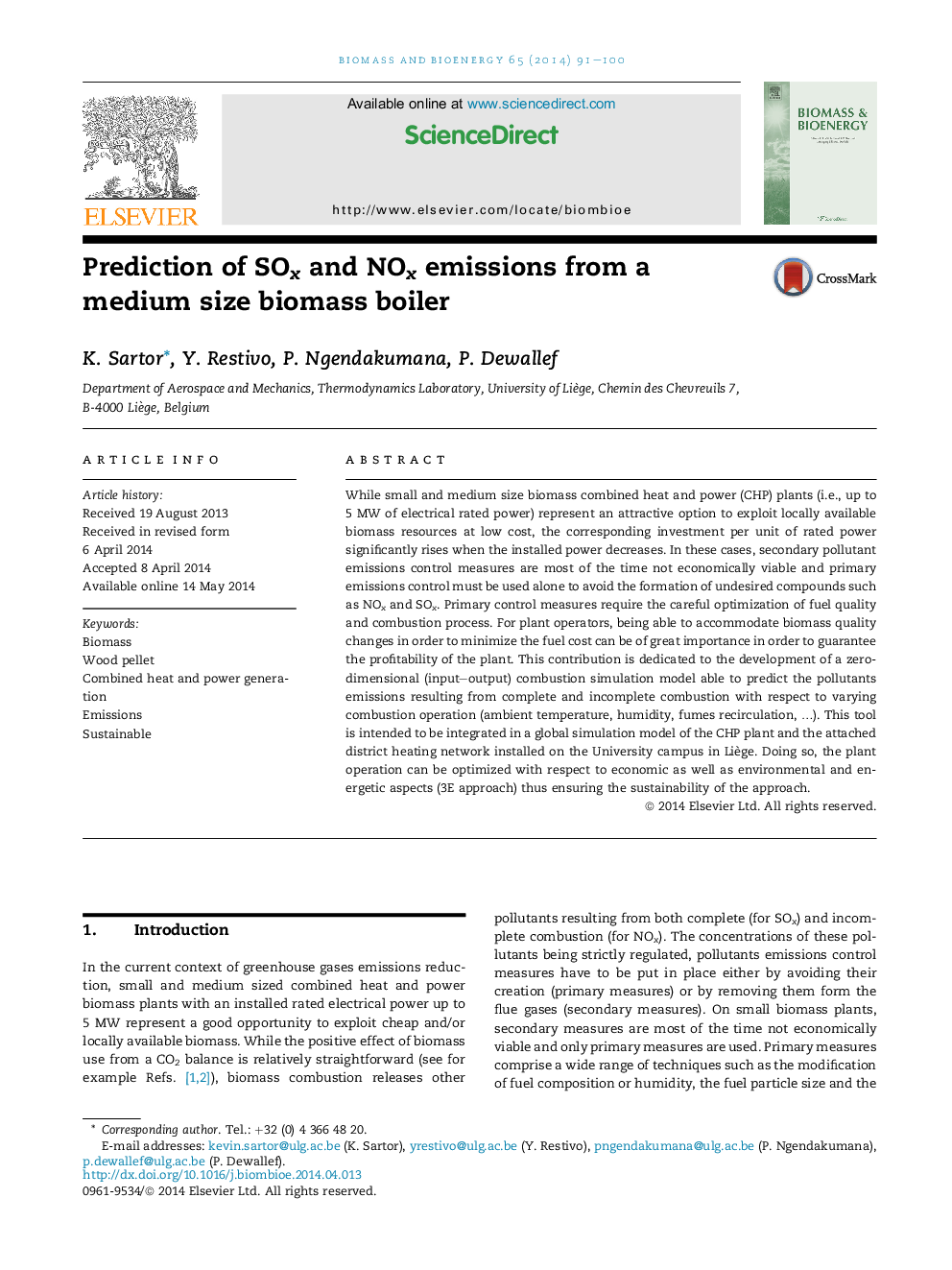| Article ID | Journal | Published Year | Pages | File Type |
|---|---|---|---|---|
| 7064857 | Biomass and Bioenergy | 2014 | 10 Pages |
Abstract
While small and medium size biomass combined heat and power (CHP) plants (i.e., up to 5 MW of electrical rated power) represent an attractive option to exploit locally available biomass resources at low cost, the corresponding investment per unit of rated power significantly rises when the installed power decreases. In these cases, secondary pollutant emissions control measures are most of the time not economically viable and primary emissions control must be used alone to avoid the formation of undesired compounds such as NOx and SOx. Primary control measures require the careful optimization of fuel quality and combustion process. For plant operators, being able to accommodate biomass quality changes in order to minimize the fuel cost can be of great importance in order to guarantee the profitability of the plant. This contribution is dedicated to the development of a zero-dimensional (input-output) combustion simulation model able to predict the pollutants emissions resulting from complete and incomplete combustion with respect to varying combustion operation (ambient temperature, humidity, fumes recirculation, â¦). This tool is intended to be integrated in a global simulation model of the CHP plant and the attached district heating network installed on the University campus in Liège. Doing so, the plant operation can be optimized with respect to economic as well as environmental and energetic aspects (3E approach) thus ensuring the sustainability of the approach.
Related Topics
Physical Sciences and Engineering
Chemical Engineering
Process Chemistry and Technology
Authors
K. Sartor, Y. Restivo, P. Ngendakumana, P. Dewallef,
